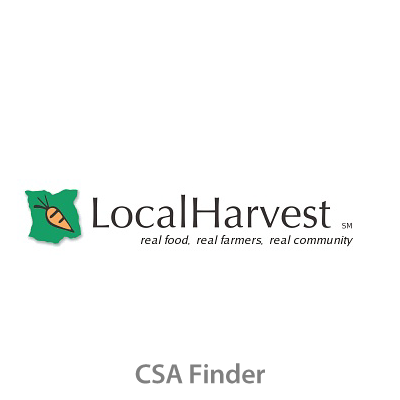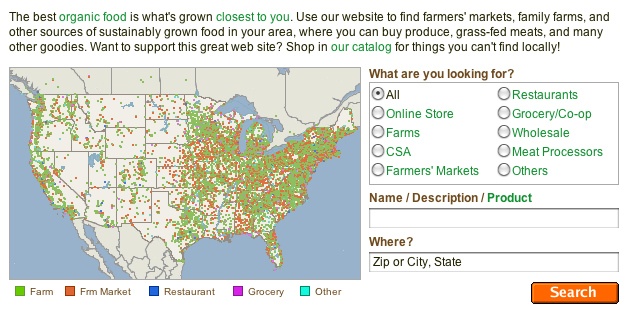As much as I like cooking from any of the several cookbooks in my library, I often look for new recipes online. It’s not an easy task. I’m amazed at the number of ad-riddled pages I find by Googling the name of a dish. I do have an online subscription to Cook’s Illustrated (previously reviewed), and there are a handful of other individual free sites I turn to for recipes and technique info. However, as a research librarian, I’m always keen to execute a search in a manner that maximizes the number of relevant results by querying a specific set of targeted resources. For scientific queries, I use freely accessible databases such as Public Library of Science PubMed, or I use one of my library accounts to access subscription-based databases such as Wiley InterScience or Elsevier’s Science Direct. When I put my home-cook hat on, I approach recipe-finding with a similar set of expectations. Though there’s no shortage of recipe information online, there’s not really an equivalent set of databases for cookery. Here’s a round-up of the best recipe aggregation resources I’ve found.
Epicurious is my go-to recipe site; I’ve used it for four years. One of the aspects I like most about it is the user comments. Because the site is older, most recipes have at least a handful of comments, and I’ve found that most users leave really helpful feedback (usually suggestions for how to scale or tweak recipes). However, it’s also very easy to ignore user comments if you just want to stick to the original recipe. I usually cook from printed versions of the recipes (rather than bringing my laptop in the kitchen), and Epicurious offers several options for the size of the printed page, whether or not images are included, and even the option to print a separate shopping list.
Most recipes come from Gourmet and Bon Appetit magazines (the site is owned by Conde Nast). Some come from cookbooks published by Random House, with whom Epicurious has some kind of republication agreement, it seems. Some have also been reprinted from other cookbooks, with permission. In addition to the 25,000 recipes from these professional resources, they also boast 50,000 member-submitted recipes. Epicurious is the online food site to beat.
Cookstr publishes recipes by professional chefs, including Mario Batali, Jamie Oliver, Alice Waters, Jacques Pepin, Michael Recchiuti, Mark Bittman, and on and on. In addition to recipes, the site also provides informative profiles for each chef. Features are fairly minimal, with a video section still under development, but I do like the simplicity of the site. Site registration allows you to save and comment on recipes. Although Cookstr only has a few recipes from each chef, it’s the closest thing to a massively cross-cook[book] database I’ve found. I hope it grows.
I learned about Food52 when the New York Times ran a round-up of new, crowd-sourced food sites. The hook of this site, founded by two food writers, is that every week there’s a theme-based competition; after a year of these contests, the winning recipes will be collected in a book. Any registered user can compete in the competitions, the founders select finalists and post slideshows of them testing the recipes, and then users vote for a winner. The focus of the site is the contests, and all recipes submitted for the contests are accessible, but registered users can upload any type of recipe. Although there is a pretty sizable diversity of recipes on the site, I most often use it when I’m looking for inspiration to try something new, not when I have a few keystone ingredients I’m trying to hang together.
Serious Eats is another curated food community with some social features, including a set of forums, and original video content in addition to a large collection of recipes. Recipes come largely from featured cookbook writers and chefs, but also the wider community base (in the forums). It’s more inclusive than Food52, because of its forums, and it’s more polyphonous because its cast of contributors is quite long and revolving. However, it’s less inclusive in the sense that the Recipes section of the site is limited to those curated by contributors (mostly recipes from featured books and chefs).
Foodbuzz is a network of foodbloggers (more than 10,000). They offer a set of services for “featured publishers,” including ad management and other perks, as well as several social networking-type features for individual users. Foodbuzz is one of the few sites I’ve found that actually aggregates recipes from across the web. You can submit links to recipes to be indexed, and you can also submit recipes for direct publication at the site. It displays some characteristics of a curated site in as much as it highlights recipes from members of its featured publishers network, but overall it’s quite open since anyone can submit a recipe or recipe link.
Epicurious, Cookstr, Food52, SeriousEats, and Foodbuzz are my favorite recipe aggregators. To reduce my search load even further, I’ve created a custom Google search engine that queries these sites in addition to a few of my favorite individual sources.
Although it has been online for years, I only recently discovered this incredibly handy resource. Use this simple website to find substitutes for cooking ingredients. Say a recipe calls for buckwheat flour, which you most likely don’t have on hand. What do you use? Type in the term and presto: The links take you to an entry which will suggest alternatives. I also find the site helpful in quickly introducing myself to new ingredients. While not exhaustive, it lists about 90% of the ingredients you’ll probably encounter, including many exotics, usually with a helpful photo and a short summary of its origin. This thesaurus of ingredients is fast, simple, and just right.
Pigeon Pea = goongoo pea = gunga pea = gungo pea = congo pea = congo bean = no-eyed peas = gandules Shopping hints: These are usually sold dried, but fresh, frozen, and canned peas also are available. They have a strong flavor, and they’re popular in the South and in the Caribbean. Substitutes: yellow-eyed peas OR black-eyed peas
*
Jocoque = labin Notes: This is a Mexican product that’s halfway between buttermilk and sour cream. Substitutes: salted buttermilk OR sour cream OR yogurt OR crema
LocalHarvest is a comprehensive one-stop resource for finding locally-grown food in the continental U.S. The site provides a customizable search feature on its homepage, and a simple zip code input provides you with a description and link to your closest Community Supported Agriculture option. Other search options include farmer’s markets, grocery co-ops, and restaurants that serve food made with organic ingredients.
There is an important concept woven into the CSA model that takes the arrangement beyond the usual commercial transaction. That is the notion of shared risk. When originally conceived, the CSA was set up differently than it is now. A group of people pooled their money, bought a farm, hired a farmer, and each took a share of whatever the farm produced for the year. If the farm had a tomato bonanza, everyone put some up for winter. If a plague of locusts ate all the greens, people ate cheese sandwiches. Very few such CSAs exist today, and for most farmers, the CSA is just one of the ways their produce is marketed. They may also go to the farmers market, do some wholesale, sell to restaurants, etc. Still, the idea that “we’re in this together” remains. On some farms it is stronger than others, and CSA members may be asked to sign a policy form indicating that they agree to accept without complaint whatever the farm can produce.
Eat ultra-fresh food, with all the flavor and vitamin benefits
Get exposed to new vegetables and new ways of cooking
Usually get to visit the farm at least once a season
Find that kids typically favor food from “their” farm—even veggies they’ve never been known to eat
Develop a relationship with the farmer who grows their food and learn more about how food is grown
It’s a simple enough idea, but its impact has been profound. Tens of thousands of families have joined CSAs, and in some areas of the country there is more demand than there are CSA farms to fill it. The government does not track CSAs, so there is no official count of how many CSAs there are in the U.S.. LocalHarvest has the most comprehensive directory of CSA farms, with over 2,500 listed in our grassroots database. In 2008, 557 CSAs signed up with LocalHarvest, and in the first two months of 2009, an additional 300 CSAs joined the site.
As you might expect with such a successful model, farmers have begun to introduce variations. One increasingly common one is the “mix and match,” or “market-style” CSA. Here, rather than making up a standard box of vegetables for every member each week, the members load their own boxes with some degree of personal choice. The farmer lays out baskets of the week’s vegetables. Some farmers encourage members to take a prescribed amount of what’s available, leaving behind just what their families do not care for. Some CSA farmers then donate this extra produce to a food bank. In other CSAs, the members have wider choice to fill their box with whatever appeals to them, within certain limitations. (e.g. “Just one basket of strawberries per family, please.”)

The spices of life. All of them, in subtle variations, from around the world. By mailorder.
- Penzeys Spices
- Muskego, WI 53150, 800-741-7787
Saffron is the stigma of the fall flowering crocus. Peek inside most any flower and you will see three threadlike filaments. These are stigma—but only in the saffron crocus are these stigma worth thousands of dollars per pound. Saffron is so valuable because it is a very labor intensive crop; only 5–7 pounds of saffron can be produced from each acre of land. This makes saffron the most expensive spice by weight—it has always been—but by use saffron isn’t that expensive, because a little goes a long way. A single gram of saffron easily translates into golden color and fragrant flavor.
Saffron contains 450–500 saffron stigmas to the gram. The stigma are also called threads, strings, pieces or strands. 1 gram equals 2 tsp. whole, 1 teaspoon crumbled or 1/2 teaspoon powdered. Don’t buy pre-powdered saffron because it loses flavor quickly and is usually cut with turmeric or something else.
Mace, the lace-like, dried covering of the nutmeg, is a sweet and flavorful spice well worth using. Mace has a softer flavor than nutmeg, and for a nice change of pace it can be used in place of nutmeg in any recipe. Blade Mace can also be added to clear soups and sauces where nutmeg powder might spoil the appearance. Mace is a traditional flavoring for doughnuts and hotdogs.
Ajwain (or Ajowan) is a traditional addition to many Indian and Pakistani dishes. It’s especially useful in vegetarian lentil and bean dishes, as a flavoring, and to temper the effects of a legume-based diet. From Pakistan.
50113 1 lb bag 13.90
50184 8 oz bag 7.49
50142 4 oz bag 4.29
Kashmir “Mogra Cream” Indian Saffron is the world’s finest saffron. The dark red color and long perfect strands are as beautiful as they are colorful and flavorful. Kashmir saffron is awfully tough to obtain, which makes it higher in price, but Kashmir Mogra Cream Saffron is truly wonderful.
Spanish Coupe Saffron is the top grade of the Spanish Saffron crop. Extra hand labor is used to remove every bit of the yellow saffron style material, leaving 100% beautiful pure red saffron threads—hence the name: coupe means “to cut”, as in cutting off all the yellow bits. Spanish Coupe Saffron is a truly excellent crop, especially nice for the traditional Spanish dishes.
Spanish Superior Saffron is the most widely available saffron and is a very good crop. Spanish Superior Saffron has a bit of the yellow style material left attached to some of the saffron stigmas (see photo), so it is not quite as strong as Spanish Coupe or Kashmir Indian Saffron.
My particular enthusiasm is home-roasted coffee and Sweet Maria’s is my go-to supplier. Not only do they offer everything you need to roast your own coffee at home, but they also carry a great range of products from inexpensive entry-level roasters to top-of-the-line home roasters. (I’ve been using the Hottop roaster for many years now and am very satisfied).
The best thing about Sweet Maria’s is that it is also a great source of information about coffee, roasting, brewing, and drinking. I’ve been a coffee nut for quite a few years now and have learned a fair bit about the subject. As far as I can tell, everything on the Sweet Maria’s site is either correct or clearly marked as opinion. What more could you want?




















